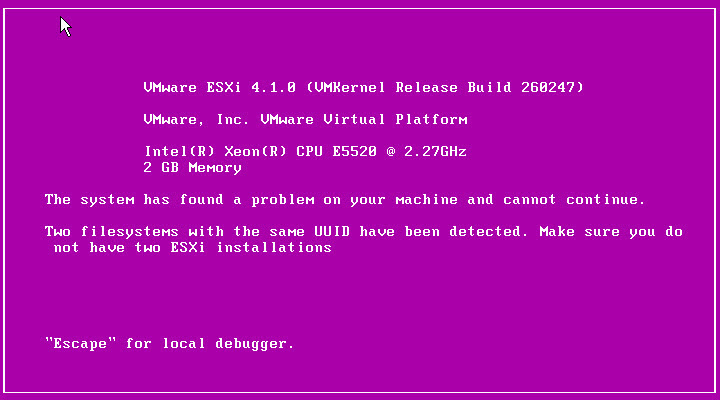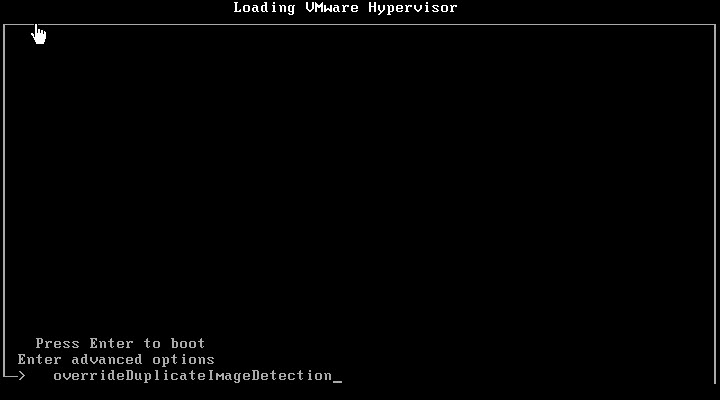公司计划作一个ESX的快速备份恢复方案,
就是将备份下来的VMX文件的硬盘直接插入另一个ESX机器,充当另一个DATASTORE。可以快速重建一个完整的GUEST OS。
对业务连续性影响最小---相对于通过网络恢复近T的数据。
嘿,你没说,这方面还真可行呢!!!
但在将两个安装有ESXI4.1的硬盘叠加在一起启动的时候,偶遇了以下粉色系错误。
Two Filesystems with the same UUID have been detected. Make sure you do not have two ESXi installations
解决方法如下:嘿,你没说,When the initial boot screen appears for ESXi press Shift+O and enter the option overrideDuplicateImageDetection and press Enter to continue the boot process.这招还真好使呢~~~

http://www.vm-help.com/esx41/file_system_UUID.php
If you boot a system with two ESXi installations, the following PSOD may be displayed with the this error: "Two Filesystems with the same UUID have been detected. Make sure you do not have two ESXi installations." This is shown in the first image below.
In some cases this error is helpful as it may indicate an installation or configuration problem. However, you may be trying to recover data on a failed installation disk in which case you want to be able to complete the boot process. When a user first posted this problem in the forum I figured it might be possible to change the partition IDs on the secondary installation to get around the problem. That direction proved fruitless but a short time later I came across the VMkernel boot option nooverrideDuplicateImageDetection. This option isn't available like other boot options in Configuration > Software > Advanced Settings. Thus it is necessary to add it during the initial VMkernel boot process. When the initial boot screen appears for ESXi press Shift+O and enter the option overrideDuplicateImageDetection and press Enter to continue the boot process. Note that the option you enter does not start with 'no' as shown in the second image.
The testing I did was in an ESXi VM using virtual disks of 8 GB. So each installation of ESXi created a 3 GB vmfs datastore. When ESXi finished booting with the option enabled and both installations present, the vSphere client initially displayed a no persistent storage error. After about a minute the error was gone and ESXi was able to see two datastores, one from each installation.


